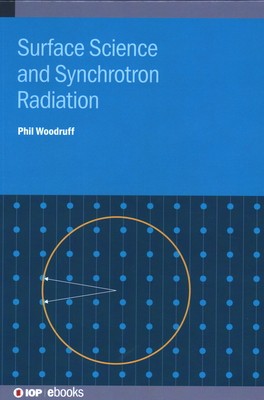
- We will send in 10–14 business days.
- Author: Phil Woodruff
- Publisher: IOP Publishing Ltd
- ISBN-10: 0750338458
- ISBN-13: 9780750338455
- Format: 17.8 x 25.4 x 1.3 cm, kieti viršeliai
- Language: English
- SAVE -10% with code: EXTRA
Reviews
Description
Experimental techniques to understand the physics and chemistry of solid surfaces blossomed following the introduction of all-metal demountable stainless steel ultrahigh vacuum methods in the late 1960s, leading to the development of many new techniques in the following years. These techniques exploit instrumentation that can be installed in university and company laboratories and are now widely used. A slightly later development, namely the availability of facilities to deliver synchrotron radiation (SR), particularly since the 1980s, has impacted on a wide range of disciplines in physics, chemistry, materials science and the life sciences. In particular, SR has allowed important enhancements in the capability of existing surface science techniques based on X-rays and vacuum ultra-violet radiation through improved spectral brilliance, and spectral and spatial resolution. Even more significantly, SR, with its wide range energy tunability in this spectral range has opened up entirely new surface methods with no equivalents in home laboratories. These enhanced and new capabilities are the particular focus of this book.
Key Features:
- Explains why synchrotron radiation is relevant for studies of surfaces
- Describes the unique properties of synchrotron radiation that provide information on surfaces not accessible without it
- Illustrates how synchrotron radiation can aid understanding of the electronic properties of surfaces
- Illustrates how synchrotron radiation can aid understanding of the structure of surfaces
EXTRA 10 % discount with code: EXTRA
The promotion ends in 23d.14:25:45
The discount code is valid when purchasing from 10 €. Discounts do not stack.
- Author: Phil Woodruff
- Publisher: IOP Publishing Ltd
- ISBN-10: 0750338458
- ISBN-13: 9780750338455
- Format: 17.8 x 25.4 x 1.3 cm, kieti viršeliai
- Language: English English
Experimental techniques to understand the physics and chemistry of solid surfaces blossomed following the introduction of all-metal demountable stainless steel ultrahigh vacuum methods in the late 1960s, leading to the development of many new techniques in the following years. These techniques exploit instrumentation that can be installed in university and company laboratories and are now widely used. A slightly later development, namely the availability of facilities to deliver synchrotron radiation (SR), particularly since the 1980s, has impacted on a wide range of disciplines in physics, chemistry, materials science and the life sciences. In particular, SR has allowed important enhancements in the capability of existing surface science techniques based on X-rays and vacuum ultra-violet radiation through improved spectral brilliance, and spectral and spatial resolution. Even more significantly, SR, with its wide range energy tunability in this spectral range has opened up entirely new surface methods with no equivalents in home laboratories. These enhanced and new capabilities are the particular focus of this book.
Key Features:
- Explains why synchrotron radiation is relevant for studies of surfaces
- Describes the unique properties of synchrotron radiation that provide information on surfaces not accessible without it
- Illustrates how synchrotron radiation can aid understanding of the electronic properties of surfaces
- Illustrates how synchrotron radiation can aid understanding of the structure of surfaces


Reviews